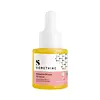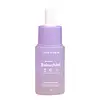What's inside
What's inside
 Key Ingredients
Key Ingredients

 Benefits
Benefits

 Concerns
Concerns

No concerns
 Ingredients Side-by-side
Ingredients Side-by-side

Water
Skin ConditioningPPG-13-Decyltetradeceth-24
EmulsifyingMethylpropanediol
SolventPEG/PPG/Polybutylene Glycol-8/5/3 Glycerin
HumectantButylene Glycol
HumectantLactobionic Acid
BufferingPotassium Azeloyl Diglycinate
Skin ConditioningBakuchiol
AntimicrobialSea Water
HumectantPanthenol
Skin ConditioningAllantoin
Skin ConditioningXanthan Gum
Emulsifying1,2-Hexanediol
Skin ConditioningTriethanolamine
BufferingPhenoxyethanol
PreservativeDisodium EDTA
Chlorphenesin
AntimicrobialCaprylyl Glycol
EmollientWater, PPG-13-Decyltetradeceth-24, Methylpropanediol, PEG/PPG/Polybutylene Glycol-8/5/3 Glycerin, Butylene Glycol, Lactobionic Acid, Potassium Azeloyl Diglycinate, Bakuchiol, Sea Water, Panthenol, Allantoin, Xanthan Gum, 1,2-Hexanediol, Triethanolamine, Phenoxyethanol, Disodium EDTA, Chlorphenesin, Caprylyl Glycol
Ingredients Explained
These ingredients are found in both products.
Ingredients higher up in an ingredient list are typically present in a larger amount.
Bakuchiol is a plant-derived antioxidant (it's vegan!). It is often called the replacement for retinol although it is not part of the same family.
It has similar effects as retinol: skin smoothing, reducing discoloration, and preventing wrinkles. It does not cause as much irritation as traditional retinoids.
Bakuchiol works by breaking down free radicals and stimulating collagen production in skin.
Combining bakuchiol with retinol will not have adverse side effects. Studies show using them will just boost the benefits. Bakuchiol is also found to help stabilize retinol.
While bakuchiol does not make the skin more sun sensitive, we recommend wearing SPF on a daily basis.
Read more about traditional retinol
Learn more about Bakuchiol